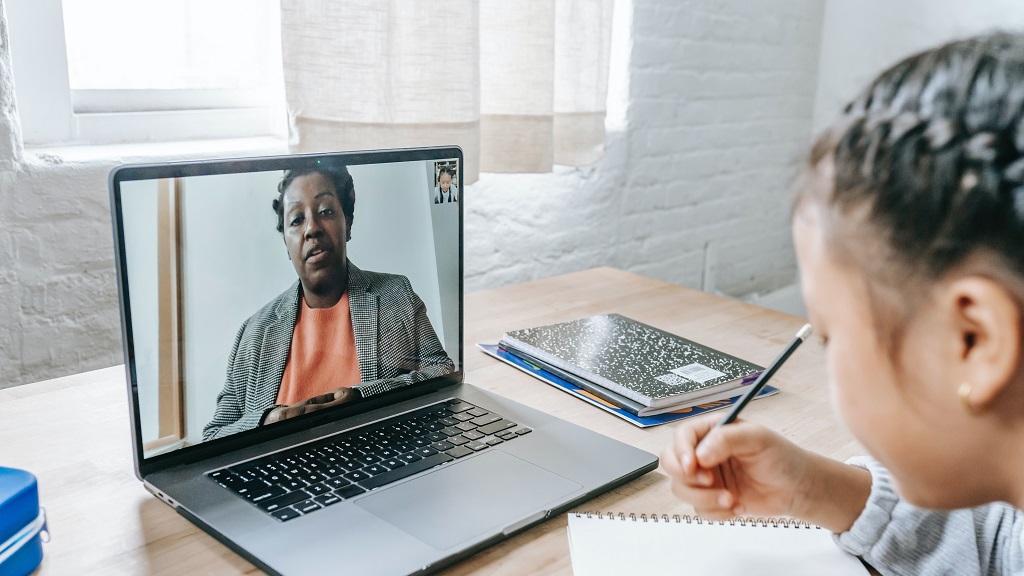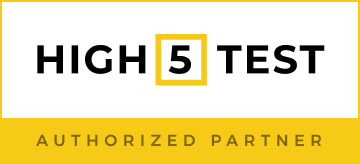As you develop your personal strengths, you may start to recognize that many of them are connected. Being able to use your strengths together can often lead to higher levels of success and satisfaction in your life.
In this article, we will discuss seven ways for you to identify and use your strengths to maximize your potential and improve the quality of your life.

What are Personal Strengths?
Personal strengths are the things that you are good at and enjoy doing. It is important to identify your strengths to use them to be successful and happy in life. By recognizing your personal strengths, you can find ways to use them together to help you reach higher levels of success and satisfaction in life.
Identifying your personal strengths will also allow you to focus on activities that bring out the best in you and make it easier for you to achieve your goals. As you explore your personal strengths, you may discover new ones that you hadn’t considered before.
7 Strategies to Discover Your Strengths
Let’s first explore the strategies to help you discover your strengths.
Undergo a strengths assessment
One of the best ways to identify and use your personal strengths is to take a strengths assessment, such as the High5 test. The High5 test is an online assessment tool that helps individuals understand their natural talents, interests, values, and goals in life.
It also provides a personalized report with actionable insights and suggestions that can be used to focus on the tasks and activities that will bring out the best in you. Other popular assessments include the Myers-Briggs Type Indicator (MBTI), StrengthsFinder 2.0, Gallup’s CliftonStrengths, and DiSC Profile.
A strengths assessment can help individuals understand their weaknesses and how their strengths can counterbalance them. For example, if someone’s genuine interest lies in leadership roles but struggles with communication skills.
A strengths assessment can help them gain insight into how developing effective communication skills can help them become better leaders. Similarly, an evaluation will provide insight into which specific traits and abilities are needed for certain jobs or roles based on an individual’s results.
Engage in discussions with family and colleagues
One of the best ways to understand and use your personal strengths is to talk with family, friends, colleagues, and mentors. Ask them what they think are your greatest strengths or the qualities that set you apart.
Engaging in meaningful conversations with people who know you well can give you insights into areas where you have a natural advantage that can be used as an asset in any situation.

Ask for feedback on areas of improvement and take time to reflect on their comments. This will help clarify any specific skills that need fine-tuning or development so that you can focus on building those skills more effectively.
Documenting these discussions is also beneficial because it provides a record of progress over time and can be used to assess the impact of specific actions taken.
Recognize and accept your limitations
Another important step in understanding and using personal strengths is accepting and recognizing limitations. While it’s useful to identify areas where you excel, it’s equally important to acknowledge those areas where improvements or adjustments may be necessary.
Being honest about your weaknesses can help you focus on developing the skills needed to counteract them. This can lead to greater self-awareness and confidence and improved performance in your tasks or roles.
With a clear understanding of your abilities, you can make informed decisions regarding which opportunities best suit your unique strengths and weaknesses.
Think back and recall times when you experienced success
Reflecting on past successes can be a great way to identify areas of strength and potential. Think back to moments when you achieved something significant and take note of the skills or qualities that allowed you to overcome any challenges.
Document these experiences and use them as reminders of how to draw on your strengths in similar situations. Dissecting these experiences can reveal more about yourself than just what resulted in success, such as the environment that allows you to reach peak performance or the mindset that helps accelerate progress.
Not only does this help reaffirm what works best for your situation, and provides valuable insight into how potential employers might value your specific skill set.
Incorporate self-reflection time into your daily routine
Taking a few moments each day to reflect on your actions and progress can be beneficial for knowing where you stand about your goals and understanding which skills are helping or hindering you. Use this time to think objectively about how you’ve dealt with challenges, successes, and failures.
This self-reflection should also involve evaluating any changes that may need to be made in the future for you to reach your desired objectives. Regularly engaging in this type of introspection can help identify areas of improvement and build the resilience needed to stay focused throughout the process.
Know what areas need improvement
It’s important to understand where your strengths lie, but it is equally important to identify where you need to improve. This could include working on a specific skill set or developing stronger organizational habits. Knowing which areas need attention will help you create an improvement plan that will further inform your development as an individual.
Be open to feedback from various sources
It can be difficult to accept criticism, but it’s essential for personal growth and development. Seek opinions from trusted individuals such as mentors, coaches, and colleagues about how they view your performance in certain situations.
These perspectives can provide valuable insights into areas of improvement you may not see yourself. Additionally, this feedback can also serve as motivation for striving to exceed expectations in the future.
The Value of Regular Strength Identification
Regularly identifying strengths has numerous advantages that can help individuals reach their goals. By assessing and understanding one’s strengths and weaknesses, individuals can identify improvement areas that may be overlooked or overlooked.
This self-reflection process provides the opportunity to think objectively about successes, failures, and challenges, giving individuals a more comprehensive understanding of their capabilities.
Additionally, strength identification can play a key role in developing resilience. By reflecting on personal experiences and evaluating any changes that need to be made in the future, individuals are better able to stay focused and determined in the face of obstacles.
It also helps foster an environment where criticism is accepted and used constructively as a tool for growth and development. They finally understood where one’s strengths lie, allowing individuals to create improvement plans to enhance their skills further and give them the confidence they need to achieve their goals.
By engaging in regular strength identification processes, individuals will benefit from improved self-awareness and gain the needed insight into how they can best use their strengths to enhance their short-term and long-term achievements.
How to Apply and Capitalize on Your Strengths
With the above in mind, you can start taking multiple steps to ensure you capitalize on your strengths and make the most of them.
First, it is important to practice self-reflection to gain a better understanding of your core abilities and weaknesses. Think about what areas of life or work have come easiest for you in the past and why.
Additionally, consider any areas where you have struggled and take note of what strategies helped you overcome these challenges.
Second, once you have identified your strengths, creating goals that will allow you to develop and utilize those skills further is essential. Although it may be tempting to attempt tasks outside your wheelhouse to challenge yourself, this approach should be taken cautiously; focus on honing existing strengths rather than trying to develop new ones.
Finally, focus on networking and building meaningful connections with people with similar strengths. This will broaden your knowledge base and open up more opportunities for growth and development in a particular field.
Also, consider that continuous self-improvement is essential to maintain an edge. By continuously reflecting on past successes and failures, you can further enhance your strengths and develop a more well-rounded skill set for tackling future objectives.
No matter how successful individuals are today, they must continually strive for growth by identifying their unique qualities and talents. Strength identification processes can help individuals uncover what makes them special and give them the focus and direction needed to reach their full potential.
The Nature of Personal Weaknesses
Building off the points about personal strengths, it is also important to recognize and accept our weaknesses. Many attempts to downplay their shortcomings can be more detrimental than helpful in the long run.
Rather than ignoring or denying our flaws, we should strive to understand and work on them. This will help us become better individuals and make us more successful in the future.
When attempting to identify what areas of yourself need improvement, look at your past experiences and consider where you have failed or struggled. That way, you can create an action plan to address and improve those weaknesses over time.
Additionally, try to gain insight from trusted peers or mentors who may be able to provide constructive feedback on areas that could use some work.
It is common to feel overwhelmed at the thought of tackling our weaknesses head-on. However, taking incremental steps each day toward self-improvement can create meaningful progress without feeling too overwhelmed. Additionally, remember that failure is an important part of growth—no one achieves success without a few missteps.
It’s easy for our weaknesses to wear us down, but embracing them is essential for developing a stronger version of ourselves. Understanding and accepting your flaws is the first step towards identifying potential solutions and continuing your journey toward success and fulfillment.
Transforming Personal Weaknesses into Strengths
Uncovering and accepting our weaknesses is important to grow and reach our fullest potential. By understanding our flaws, we can create an action plan to address them and improve ourselves.

One method for transforming weaknesses into strengths is self-reflection. Taking the time to think about past experiences can help us identify areas where we have failed or struggled, allowing us to develop concrete solutions for improvement.
Additionally, seeking out advice from trusted mentors or peers can provide valuable feedback that can be used to make meaningful progress.
Another way of transforming weaknesses into strengths is by taking incremental steps toward self-improvement. While it may be overwhelming to tackle weaknesses head-on, breaking down goals into smaller tasks over time makes the process more manageable and achievable.
Additionally, recognizing that failure is essential to growth helps shift our mindset away from perfectionism and towards a more realistic approach.
Understanding and embracing personal flaws is critical for developing a stronger version of ourselves. Our weaknesses can become strengths with dedication and effort, leading us closer to success and fulfillment.
Conclusion
Ultimately, transforming weaknesses into strengths is a challenging but rewarding journey. By understanding and accepting our flaws, we can create actionable solutions that will guide us closer to success and fulfillment.
Additionally, self-reflection, seeking advice from mentors or peers, and breaking down goals into achievable tasks are all effective methods for improving ourselves over time. Through this process of self-improvement, we can ultimately become the best versions of ourselves.
The key to achieving success and fulfillment is embracing our weaknesses to transform them into strengths. With dedication and effort, this process helps us unlock our full potential and reach heights we once thought unimaginable. Connecting with our true selves through honest introspection allows us to discover what makes us unique.


